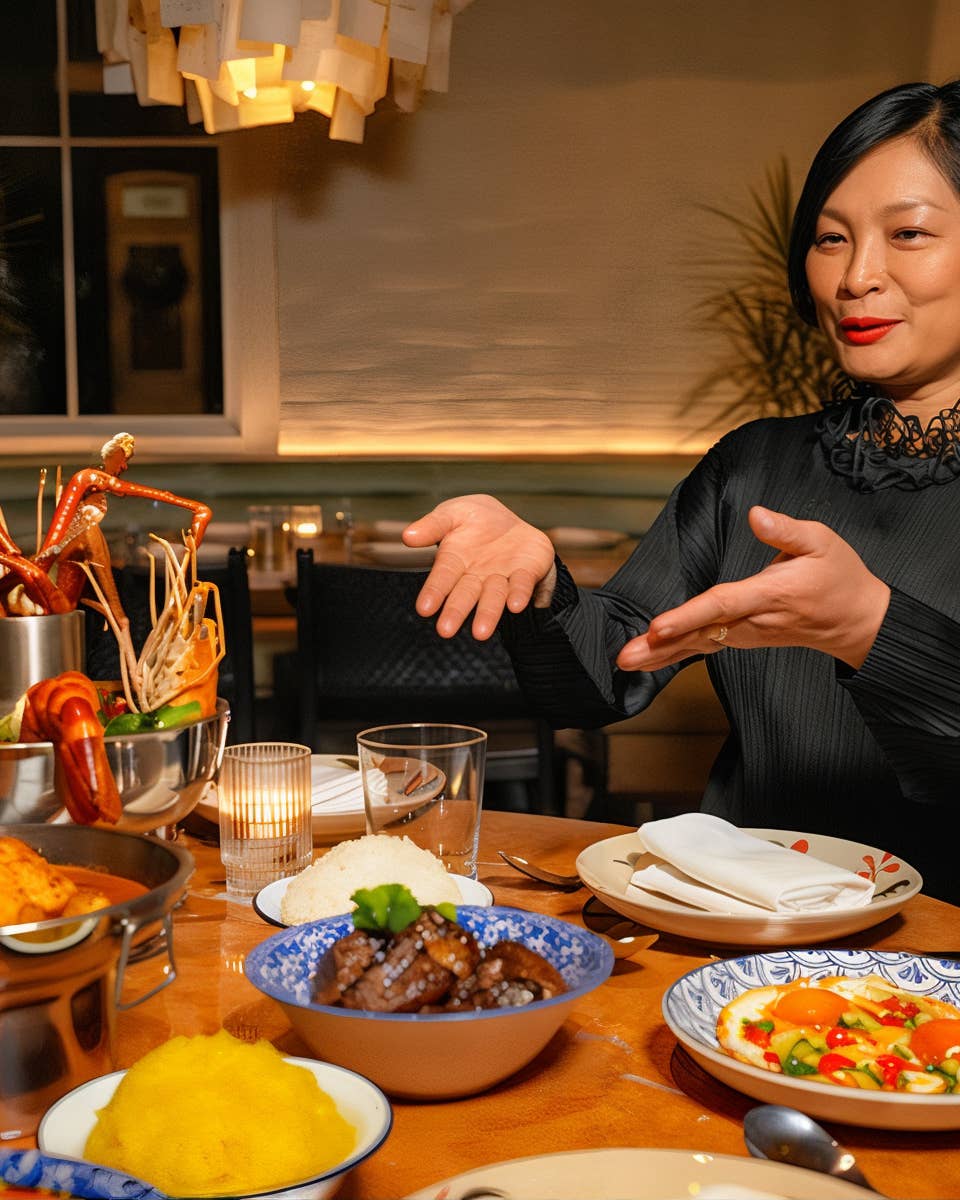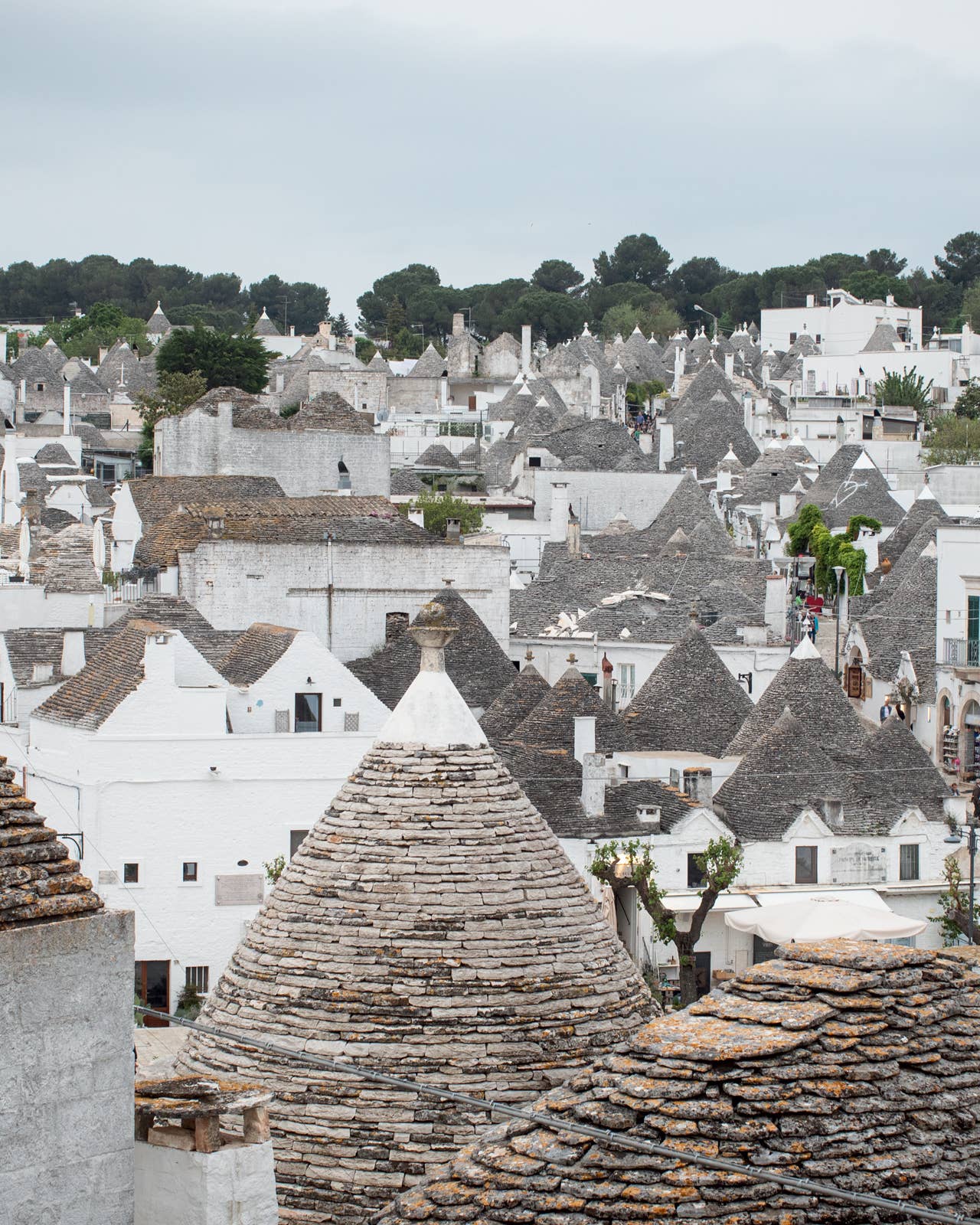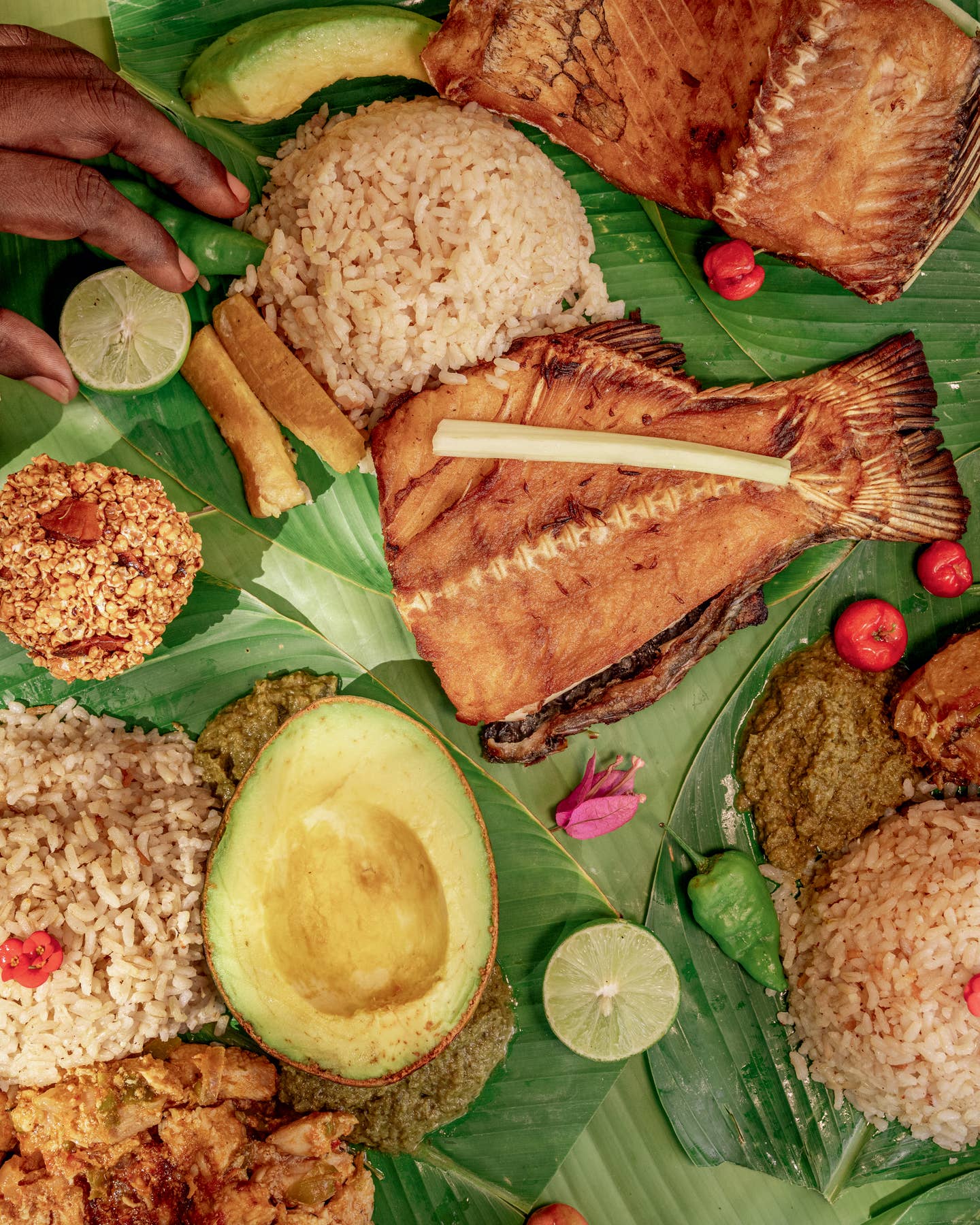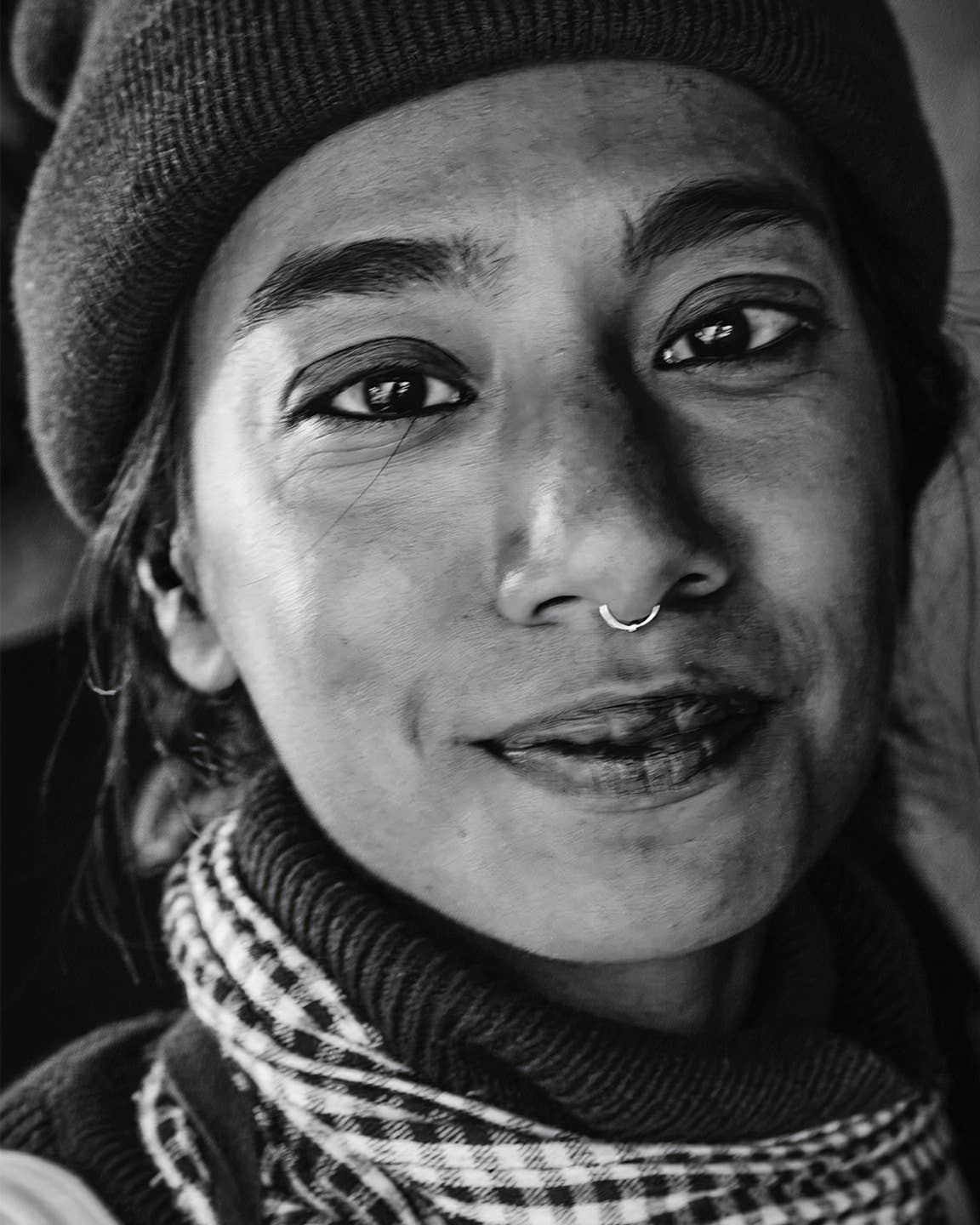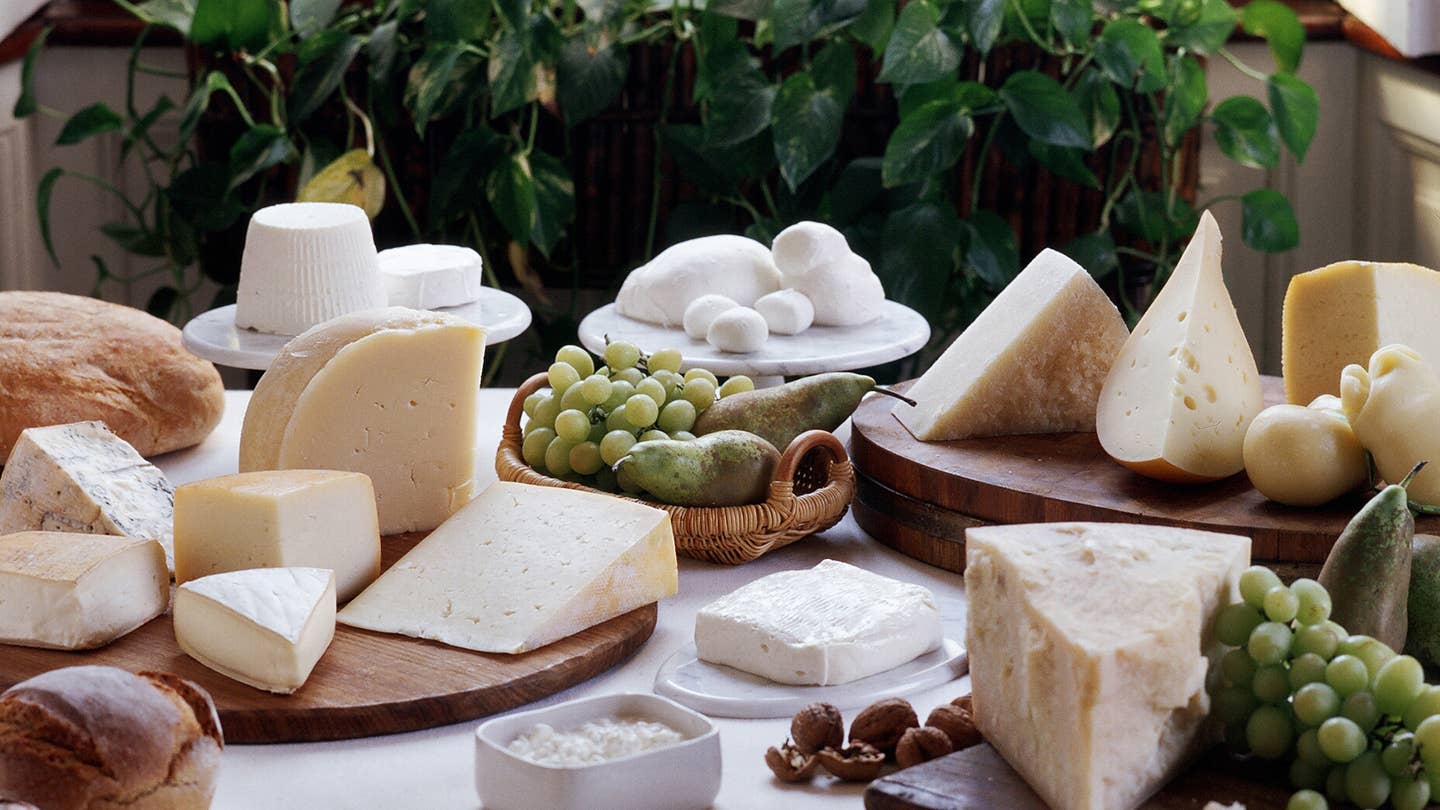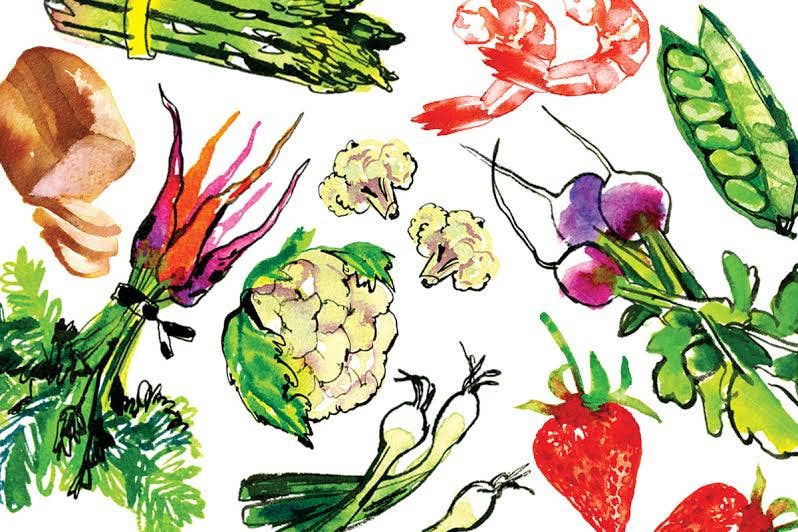
A Month in the Dordogne
The other day I was trimming the hedge in our kitchen garden in Hollywood, when I was overwhelmed with a craving for coq au vin. In my mind's eye, I could see quartered mushrooms and pearl onions and pieces of glistening brown chicken burbling around in a bay-scented sauce. I'm like that with food. Maybe it's cooking with wine. Or maybe it's wine. Or maybe it's just cooking. Some people dream about traveling south to Florida for spring training. Me, and my wife, Carolyn? We've dreamed for years about traveling to the South of France and renting a house and spending a month doing pretty much nothing but seeking out and cooking legitimate, down-home, farm-raised, from-the-earth, gen-u-ine French food.
Carolyn and I had been to France together before, and had often found ourselves wandering through Paris markets, gazing longingly at baskets piled with haricots verts, at ice-filled cartons topped with fish, at pigeons, guinea hens, and naked rabbits nestled in the windows of boucheries. We'd end up grabbing the obligatory baguette and cheese and repairing to a cramped hotel room where we'd sit on the edge of the bed and savor the fresh-off-the-streets-of-Paris flavors—reminding ourselves that, though the room was tiny and the bread crumbs were invading the sheets, we were in France.
Last year, we finally decided to put ourselves in a situation where baskets of haricots verts and naked rabbits were not something we were compelled by circumstance to pass by, but were our whole reason for being there. We started calling a string of rental-property brokers with one request: A house that had a great kitchen. A pool? That'd be nice, but not necessary. Yard? Yeah, we want a yard. Well, the broker would gush, we've got this house with two acres, on a vineyard, and it's got the most marvelous master bedroom with a canopied bed....And meanwhile we're saying, yeah, but what about the kitchen? We'd like a huge kitchen, with a proper dining area and a great stove and decent implements, and....You could almost hear the broker on the other end of the line, thinking, Who are these people? Food nuts? Well, um, yeah.
Eventually, I hooked up with a broker in London, who everyone said would know about kitchens because he's an excellent cook. "I have just the house for you," he announced with considerable authority. "La Malvinie. It's in a little village of about 25 families, called St-Julien-de-Crempse, just north of Bergerac...." I was writing the deposit check as he described the kitchen: "It has a food-prep island and a fireplace," he said. "It's open on two sides, with French doors leading to a trellised dining patio. There's a dining table and a sitting area, and a herb garden with a cobbled walk, and 'usable' utensils...."
"We'll take it for the month of June," I interrupted.
"White asparagus is in season in June," he sighed hungrily.
We spent the next few months preparing for our trip. We scanned the typical guidebooks, quickly putting aside the tedious tomes that rhapsodized on castles and museums and primitive cave paintings. At last, we came across Patricia Wells's The Food Lover's Guide to France, which turned out to be a veritable _Playboy _for food nuts: photos of markets filled with foods straight from the farms; lists of village markets and the days of the week on which they occur; reviews of local purveyors; the best places for a cheap lunch. We pored over its pages, literally drooling with anticipation. Who wants to waste time staring at some cave-guy's scrawlings of a wild boar when you can actually track down wild-boar ham? You get the picture?
On the last day of May, with our 2-year-old daughter, Lilly, in tow, Carolyn and I headed for St-Julien-de-Crempse, which is in southwestern France, in the Dordogne region, east of Bordeaux. La Maison, the main house at La Malvinie, stands in a 17th-century farm compound atop a hill, overlooking fields of hay and corn and sunflowers. From our bedroom window on the second floor, we could see into a coop of chickens, with a rabbit hutch just beyond. The yard in front of the house had a walled garden planted with roses, fragrant lavender, and lilies, and the kitchen was a delightfully serious cooking space: The stove had two ovens, there was a huge refrigerator, and the cabinets were full of china and wineglasses and "usable" pots and pans.
We fell into a daily schedule that began early (2-year-olds can be counted on to be fairly punctual in this regard), with strong coffee, fresh fruit, and croissants on the patio while we consulted Patricia Wells's book for a nearby village that had an open market that day. We particularly enjoyed the one in Bergerac, held on Wednesdays and Saturdays, in the narrow streets surrounding the town's cathedral. You could smell the rich fragrance of cavaillon melons as you approached the market, and you could hear the insistent hum of expert French shoppers. Colorful umbrellas were spread over tables bulging with sausages and pates, with Swiss chard that was literally four feet long, and with huge bundles of sunflowers going for a mere 10 francs (less than $2) each. There was fresh butter, cut into one-kilogram chunks from a huge solid block, sold every week by a wizened little woman with twinkling eyes. There were wild mushrooms, baskets of fraises des bois, chickens, guinea hens, pigeons, and ducks laid out on card tables alongside fresh eggs—and, of course, there were local farmhouse cheeses of every description. White asparagus was indeed in season; and there must have been twenty farmers selling the elegant ivory-colored stalks.
We were walking through the farmers' market with the liberating knowledge that we had a kitchen to go home to. We were no longer tourists marveling at "local color", but voracious (if not exactly expert) shoppers—pinching the local marmande tomatoes, looking for the asparagus guy who had the good ones last week, searching the far corners of the market for the olive seller who moved his cart from the spot he'd had the week before.
After the market, we'd go out for lunch; not at "good" restaurants, Michelin-starred or otherwise (2-year-olds and fine wines in crystal goblets don't mix), but at local routiers (truck stops) or at informal spots that we chanced upon. The food in these family-run establishments was simple yet well prepared, and the ambience was very, very kid-friendly. Our favorite was Auberge de la Nauze, tucked away in the ancient village of Fongauffier. The first day we went, we wanted to sit downstairs, where locals smoked and ate at big communal tables, but the owners insisted that we dine upstairs in a more formal room. We compromised on the "garden", which was actually the corner of the gravel parking lot. We sat down and, when the waitress arrived, confidently ordered the menu du jour, without having the slightest idea what it would turn out to be. She disappeared and soon reemerged with a liter of vin ordinaire and our salads, each consisting of half a perfectly ripe, perfectly silky, and astoundingly sweet cavaillon melon, a huge slice of coarse pate de campagne, and a scramble of field greens. The combination, scattered with a few cornichons, was sublime. Next, she brought out the main course: crisp pork sausages in a dark and rich reduction that tasted faintly of fresh rosemary, a neat little bundle of bacon-wrapped haricots verts, and a timbale of couscous with mixed baby vegetables. Dessert was a trio of raspberry, strawberry, and lemon ices covered with a mountain of fresh blueberries and fraises des bois. All of this for 58 francs (about $11) each. We concluded that French farmers eat better every day than Michael Ovitz does.
After lunch, we'd drive back to La Malvinie, put Lilly down for a nap, sometimes take one ourselves, and then, at around five o'clock, open an icy bottle of bergerac rose and start going through the day's booty to determine what we'd have for dinner. White asparagus, it turned out, was an iffy affair: The "expensive" kind—it ran about 30 francs for half a kilo, roughly $6 a pound—was as thick as two thumbs. We learned to peel it carefully before parboiling it, but even then, it frequently cooked up stringy and had a pallid, watery flavor.
The "cheap" kind, on the other hand, at 10 francs for half a kilo, was about the size of your little finger, and, when sauteed in some butter, simply burst with flavor. One day, up in Perigueux, we found mounds of glorious green peas. That afternoon, as Lilly scampered around under the cherry trees, we sat in the sun, sipped rose, and shelled them. Later, Carolyn parboiled the peas and some (cheap) white asparagus and combined them with melted goat's-milk cheese to make a ridiculously creamy and rich sauce for pasta.
Other times, we stuffed fresh eggs in the Perigord style, with ham and herbs, and fried them; we made pigeon with peas, and grilled duck breast with fresh cherry and apple sauce; we roasted a guinea hen stuffed with fresh green onions and Toulouse sausage and wrapped in poitrine fumee—smoked pork. One of our Dordogne cookbooks said that guinea hen could stand up to the strong flavor of French bacon, and it did; the bacon burned through, exposing the skin of the hen, which browned to perfection. We drove to the walnut-oil mill a few villages away one day, and bought fresh-pressed oil, using it that night in a pasta with Swiss chard. Down in Bergerac, in the "old town", there was a fish market that had the most incredible mussels and clams and fresh fish from the coast near Bordeaux. We made a pasta with tiny, plump mussels one evening that left us wondering, Why don't we just move here?
And then, of course, there were the local wines. We drank plenty of them—cases of the stuff. Mostly, we drank those from the Bergerac and Pecharmant regions, for $5 or $6 a bottle. The pecharmants were particularly hearty, dark wines, with a kind of smoky, dense, elaborate taste we had never encountered before. We found one of the best wines in a tiny boucherie in Bergerac. The owner had bought several cases of a 1988 Chateau Les Merles and it wasn't until 1996 that he put them up for sale. That wine, from one of the best years in that region, was exquisite.
One night, as we sat down to charcoal-grilled butterflied leg of lamb and platefuls of waxy potatoes sauteed in goose fat with vinegar, I found myself wondering if it was all worth it. We were near the end of our stay, and it dawned on me that we had traveled thousands of miles to do pretty much what we did every night at home.
Then, a day or so later, it came to me—the dream, the France thing, the cooking thing, the whole shebang. It was a Saturday, and we'd just returned from the market in Bergerac. Carolyn was in the kitchen, putting away new potatoes and fresh farm butter and green onions and the requisite cavaillon melons, and Lilly and I went for a walk. We had lived in the village for nearly a month, and had yet to speak with a single person living in the cottages around us. I'd heard from others who had spent time in the region that the locals were a standoffish lot, not warm to strangers, and that proved to be true. All were hardworking farmers, and I suppose they didn't have time for the "rich Americans" who invaded their tiny corner of the world. We respected their sense of privacy; we, too, kept our distance. But as I watched them go about the business of a tiny farm village in the heart of France, I wondered if they realized what culinary wealth engulfed them.
That day, as I pushed Lilly in her stroller down one of the narrow streets in St-Julien-de-Crempse, I got my answer. The town hall had been shuttered since we arrived. Now, its doors had been flung open, and I stood across the street, not quite believing what I was seeing: One of the building's three rooms was a large kitchen, filled with men and women stirring, tasting, arguing over a large stove laden with steaming pots. Where else in the world, I thought, could you cook at a town hall?
I never found out what that feast was for. It was unthinkable that we, as outsiders, would invade such a private affair—but I was so intrigued that I made it a point to walk through town again later, at two o'clock. This time, everyone was in the building's large communal room, sitting at long tables, pouring wine and passing serving dishes around. I walked past yet again, about five o'clock, and they were still sitting there, talking and gesturing and nibbling bread and drinking wine. And in an instant, I knew why we had come to France. We had come to affirm that in at least one other place on the planet there are food nuts, people as crazy about cooking and eating and drinking and talking about it as we are. And I realized something else: Cooking is more than taking a collection of meats, vegetables, spices, and oils and transforming them from foodstuffs into a meal. Cooking is a communal affirmation of love and solidarity, for a village, or for a family. That's what makes food taste so good.
Keep Reading
Continue to Next Story





